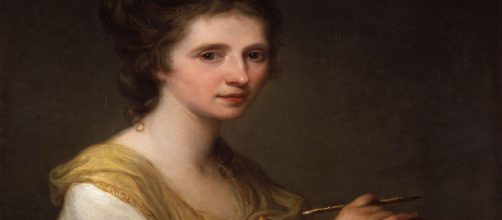While the Brits have a history of female queens and prime ministers, when it comes to artists who are women, their past is riddled with bias. The Royal Academy of Arts is currently celebrating its 250th year, but chauvinism marked a lot of its reign.
The way it was
The Academy, established in 1768, took nearly a century for the first woman, Laura Herford, to gain admission. And it took a ruse to do it. Instead of submitting her portfolio under her own name, she used her initials. Granted, gender bias affected female artists in other countries. Fully a half century after Herford got into the Academy, Anna Hyatt Huntington's life-size sculpture of Joan of Arc, which won first place in a Paris competition, was revoked when judges discovered the work was done by a woman.
To France's credit, as far back as the 17th century, the French Royal Academy of Painting and Sculpture accepted Louise Moillon as a student. This, even though her subject-matter was limited to still lifes, which were long disregarded in the art world (more about the limitation in a moment).
Beating the system
It wasn't until 30 years after Herford tricked the British Royal Academy into admitting her that women would be allowed entrance. This was despite the fact that two of the founders of the Academy were women – artists Mary Moser and Angelica Kauffmann. You would have thought that founders would be entitled to membership.
Look back in anger
Naturally female artists grew angry over time. In 1914, Mary Richardson knifed a painting by Diego Velasquez ("Rokeby Venus") at the National Gallery, and Mary Wood shattered glass protecting John Singer Sargent's portrait of Henry James at the National Portrait Gallery.
Not that their activism did any good. It took another 40 years for women to even be allowed to attend meetings at the Academy; although they continued to be barred from dinners afterwards.
Historians have a lot of explaining to do
Probably contributing to this sexist thinking were historians like Karl Scheffler who proclaimed in his treatise "Women and Art": "In an Amazonian state, there would be neither culture, history nor art." As he explained it, women are incapable of spiritual insight.
Tell that to the 17th century painter Clara Peeters who managed to address the nondescript concept of mortality by just painting flowers and fruit. She was held to still lifes because female artists weren't allowed to study figure art at the Academy, owing to the nudity of the models. Apparently only male students were thought capable of handling the sight of human anatomy maturely.
The end of the story
Not to blame everything on male historians, female scholars like Helen Garner were no better in terms of treating women. In her "Art through the Ages," she omitted women's art altogether and said nothing about the history that Moser and Kauffmann made when they formed the Royal Academy. Oh, well, at least the story of the school has a happy ending; half of the students there now are women. But what a slog!


